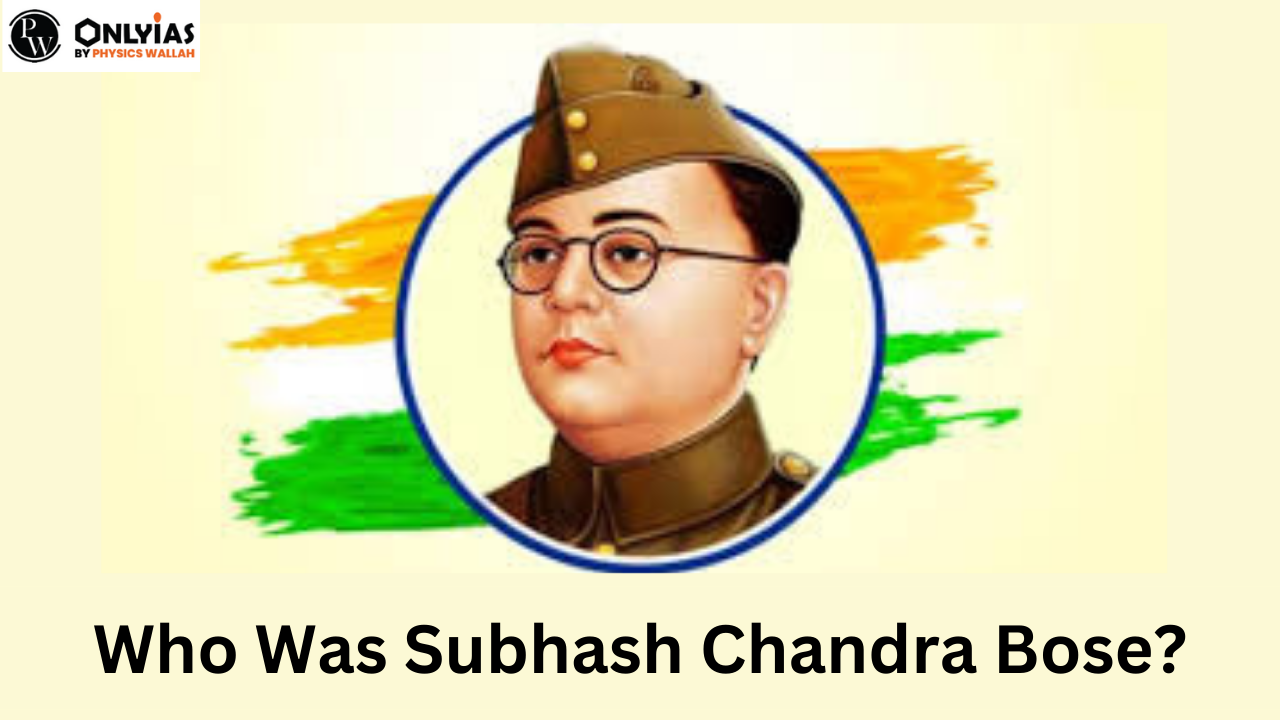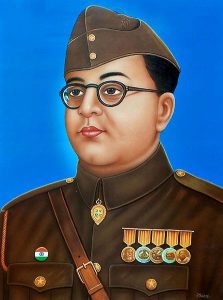
Subhash Chandra Bose Biography: Subhash Chandra Bose, popularly known as Netaji, was one of the most prominent and influential figures in India’s struggle for independence from British rule. His unwavering determination, visionary leadership, and revolutionary ideas made him a symbol of courage and patriotism. Subhas Chandra Bose’s life and contributions continue to inspire and captivate the hearts of millions even today.
| Subhash Chandra Bose Biography | |
|---|---|
| Full Name | Subhash Chandra Bose |
| Date of Birth | January 23, 1897 |
| Place of Birth | Cuttack, Orissa, British India |
| Role in Independence Movement | Leader and Freedom Fighter |
| Famous Slogan | Tum mujhe khoon do mai tumhe azadi doonga’ (Give me blood, I shall give you freedom) |
| Legacy | Subhas Chandra Bose is remembered as a national hero and a symbol of India’s fight for freedom. His contributions to the independence movement continue to inspire generations of Indians. |

Subhash Chandra Bose was born on January 23, 1897, in Cuttack, Odisha, India. He was a prominent figure in India’s independence movement against British rule. Subhash Chandra Bose’s early education took place in Cuttack and later in Calcutta, where he developed a passion for nationalistic ideas. He played a vital role in organizing and leading protests and movements against British oppression. Bose was elected as the president of the Indian National Congress in 1938 but eventually disagreed with their methods and formed the Forward Bloc.
Subhash Chandra Bose, the iconic Indian nationalist, remains a revered figure in the annals of India’s struggle for freedom. Born on January 23, 1897, in Cuttack, Orissa, Bose’s unflinching patriotism and charismatic leadership left an indelible mark on the nation. His most renowned achievement was the founding of “Azad Hind Fauj” (Indian National Army) and his stirring slogan, “Tum Mujhe Khoon Do, Main Tumhe Azadi Dunga” (You give me blood, I’ll give you freedom), which ignited the spirit of countless Indians in their quest for independence. Tragically, his life was tragically cut short due to burn injuries sustained in a plane crash in Taiwan, leading to his passing on August 18, 1945. Despite his untimely demise, Subhas Chandra Bose’s legacy endures as a testament to his unwavering dedication to India’s liberation.
Subhash Chandra Bose, one of India’s most revered freedom fighters, is remembered on his death anniversary for his relentless struggle against British rule. His mysterious death on August 18, 1945, in a plane crash in Taiwan remains a topic of intrigue and speculation to this day. Netaji’s legacy continues to inspire millions, and his contributions to India’s freedom struggle are commemorated with deep respect and admiration.
On August 18, 1945, during the closing stages of World War II, Netaji Subhash Chandra Bose met his untimely end in a plane crash in Taihoku (now Taipei), Taiwan. He was reportedly on a flight from Japanese-occupied Manchuria to Tokyo. The circumstances surrounding his death have given rise to numerous theories and speculations, with some suggesting that the crash was staged, and others proposing that he survived and lived in anonymity. Despite the enduring mystery, Netaji’s legacy as a formidable freedom fighter and his relentless pursuit of India’s independence continue to inspire generations of Indians, and his contributions remain an integral part of India’s history.
Subhash Chandra Bose, often referred to as Netaji, had an interesting early life and came from a distinguished family:
Early Life:
Education:
Family:
Subhash Chandra Bose’s early life and family background provided a strong foundation for his later involvement in the Indian independence movement. His upbringing instilled in him a sense of duty towards his country, and he went on to become one of the most prominent and dynamic leaders of the struggle for India’s freedom.
Netaji Subhash Chandra Bose was a multifaceted leader with a dynamic ideology that evolved over time. His core ideological beliefs can be summarized as follows:
Subhash Chandra Bose’s ideology was marked by his unwavering determination to secure India’s independence and his willingness to explore various strategies and alliances to achieve this goal. While his methods and alliances during World War II remain controversial, his commitment to the cause of Indian independence and his charismatic leadership continue to be celebrated in India’s history.
Subhash Chandra Bose had a complex and sometimes contentious relationship with the Indian National Congress (INC), which was the dominant political party in the struggle for India’s independence. Here’s an overview of his association with the INC:
Early Involvement:
Leadership within the INC:
Resignation from the INC:
Formation of Forward Bloc:
World War II and International Alliances:
Subhash Chandra Bose’s relationship with the Indian National Congress was characterized by his early alignment with the party’s ideals, his rise to leadership within the INC, and ultimately his resignation due to differences over strategy. Bose’s approach to achieving independence was more militant and confrontational than that of the INC leadership led by Mahatma Gandhi. His subsequent formation of the Forward Bloc and collaboration with Axis powers during World War II further distanced him from the Congress and contributed to the complexity of his legacy in India’s struggle for independence.
Subhash Chandra Bose’s escape from India is one of the most intriguing and daring episodes in the history of India’s struggle for independence. Here’s a summary of his escape:
Background:
The Great Escape:
Journey to Germany:
Formation of the Azad Hind Radio:
Alliance with Axis Powers:
The INA and the Burma Campaign:
Subhash Chandra Bose escape from India and his subsequent activities in Europe and Southeast Asia marked a remarkable chapter in the history of India’s struggle for independence. While his collaboration with Axis powers remains a topic of debate, his leadership and determination in seeking international support for India’s cause left a lasting legacy.
The establishment and efforts of the Azad Hind Fauj, commonly referred to as the Indian National Army (INA), during the Second World War marked a pivotal development in India’s struggle for liberation. Rash Behari Bose, an Indian revolutionary who had sought refuge in Japan, played a crucial role in its formation. Under the banner of the Indian Independence League, the INA was created using Indian prisoners of war with the goal of liberating India from British colonial rule once Japan defeated the British in Southeast Asia. General Mohan Singh, a former British Indian army officer, played a significant role in organizing this force.
Subhash Chandra Bose, a prominent leader in the fight for India’s independence, fled India in 1941 and made his way to Germany. In 1943, he arrived in Singapore to lead the Indian Independence League and transform the Indian National Army (Azad Hind Fauj) into a potent instrument for India’s freedom. Comprising about 45,000 soldiers, including Indian prisoners of war and Indians residing in various Southeast Asian nations, the Azad Hind Fauj became a symbol of hope.
On October 21, 1943, Netaji Subhash Chandra Bose announced the establishment of the provisional administration of independent India (Azad Hind) in Singapore. In the Andaman Islands, which had been previously occupied by the Japanese, Netaji hoisted the Indian flag. In early 1944, three units of the Azad Hind Fauj (INA) launched an offensive in northeastern India in an attempt to drive the British out of the country. These brave soldiers, upon entering Indian soil, fervently paid their respects to their motherland. However, despite their valiant efforts, Azad Hind Fauj’s attempt to liberate India did not succeed.
The Japanese government was viewed with suspicion by the Indian nationalist movement, as it had caused suffering in the nations it had invaded. Nevertheless, Netaji believed that British control over India could be overturned through the cooperation of the Japanese-backed Azad Hind Fauj and an uprising within the country. The “Delhi Chalo” slogan and salute of the Azad Hind Fauj inspired Indians both inside and outside the nation. For the sake of India’s freedom, Netaji united Indians from all regions and backgrounds residing in Southeast Asia.
Indian women made significant contributions to the fight for India’s independence. The Azad Hind Fauj organized a women’s unit, overseen by Captain Lakshmi Swaminathan, known as the Rani Jhansi Regiment. The Azad Hind Fauj came to symbolize unity and bravery among Indians. Tragically, shortly after Japan’s surrender, Netaji, one of the most influential figures in India’s battle for independence, was declared dead in an aviation crash.
The end of World War II in 1945 marked the defeat of Fascist Germany and Italy, but it also brought devastation and loss of life on an unprecedented scale. The United States of America’s use of atomic bombs on the Japanese cities of Hiroshima and Nagasaki, while ending the war, resulted in the immediate death of around 200,000 people and set the stage for new global tensions and a dangerous arms race that threatened humanity’s existence.
Subhash Chandra Bose Jayanti, also known as Netaji Jayanti, is an important commemorative day in India. It marks the birth anniversary of one of India’s most influential freedom fighters and leaders, Subhas Chandra Bose. Here’s what you need to know about this occasion:
Date: Subhash Chandra Bose Jayanti is celebrated on January 23rd each year, as it marks the birth date of Netaji Subhas Chandra Bose.
Significance: This day is observed to honor the life and contributions of Subhas Chandra Bose to India’s struggle for independence. Bose’s relentless pursuit of freedom and his leadership in the fight against British colonial rule left a lasting impact on the nation.
Celebrations: Subhash Chandra Bose Jayanti is commemorated with various activities and events across India:
Subhas Chandra Bose Jayanti serves as a reminder of the sacrifices made by freedom fighters like Netaji and their unwavering commitment to securing India’s independence. It encourages people to reflect on the principles of patriotism, selflessness, and the pursuit of justice that guided Bose’s life and actions.
Here is a chronological list of important events in the life of Subhash Chandra Bose:
These events provide a glimpse into the diverse and significant roles that Subhash Chandra Bose played in India’s struggle for independence and his contributions to the nation’s history.
Sign up for the PWOnlyIAS Online Course by Physics Wallah and start your journey to IAS success today!
| Related Links | |
|---|---|
| Bhagat Singh | Jyotiba Phule |
| Mahatma Gandhi | Raja Ram Mohan Roy |
| Satyendra Nath Bose | Jawaharlal Nehru |

<div class="new-fform">
</div>